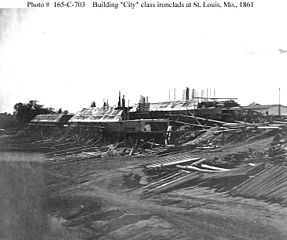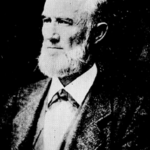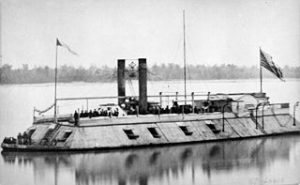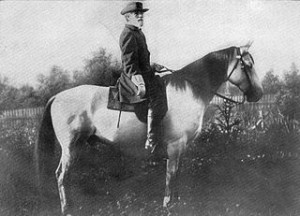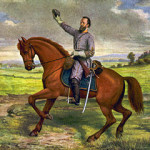Pook Turtles: The Backbone Of The Brown Water Union Fleet
What Are Pook Turtles? How Did They Get Their Name?
Pook Turtles were seven ironclad Union gunboats that operated in the “brown water” of the Mississippi River and its tributaries. They were called “Pook Turtles” because their appearance in the water was like that of giant mud turtles, and because they were designed by Samuel M. Pook.
Pook Turtle gunboats were also referred to as City-class or “Eads gunboats.” They were the United States’ first ironclad gunboats. The construction of the Pook Turtles was finished two months before the famous ironclad battle between the Monitor and the Virginia at Hampton Roads on March 8-9, 1862. Pook Turtles played an important part in the river waters of the Western Theatre for the Union.
Who Made The Pook Turtles?
James B. Eads was contracted by the War Department on August 7, 1861, to build the seven ironclad gunboats and to have them and their crews ready for service in sixty-five days. Four of the Pook Turtles were built at Carondolet near St. Louis, Missouri, and three were built in Mound City, Illinois. The average cost per Pook Turtle to build was $101,808.All seven Pook Turtles were very similar in appearance. To tell them apart, their chimneys had bands painted in different colors. The round-nosed Pook Turtles were flat-bottomed and drew only 6 feet of water so they could operate in shallow waters. The Pook Turtles were 175 feet long, 51 1/2 feet wide, were plated with 2 1/2 inches of iron, had flat sides, and their rear casemates had a 35-degree slope. Each Pook Turtle weighed 512 tons, 122 tons of that weight came from their 2 1/2-inch-thick armor plating. The coal-powered Pook Turtles had a stern paddle wheel, they were weak in power, and clumsy to operate. Most significantly, their design called for 13 heavy guns on each gunboat. The heavy guns on the Pook Turtles made them formidable and deadly war machines.
The Names Of The Pook Turtles And Their Chimney Band Colors
The names of the seven Pook Turtles and the colors of their chimney bands:
- Cairo – gray
- Carondelet – red
- Cincinnati – blue
- Louisville – green
- Mound City – orange
- Pittsburg – brown
- St. Louis – yellow
What Did The Pook Turtles Do?
The Pook Turtles were effective gunboats. They were the strong backbone of the Union brown water river fleet. In 1862, Pook Turtles were successfully used in the capture of Fort Henry on the Tennessee River, Fort Donaldson on the Cumberland River, and Island Number 10 on the Mississippi River.
Pook Turtles were also employed during the campaign on Fort Pillow in April of 1864. The ironclad gunboat Pook Turtles played a strong role at Memphis in June of 1862. At Memphis, Pook Turtles and Union rams outmatched Confederate ram “cottonclads,” which partially used cotton padding as armor.
What Happened To The Pook Turtles?
- The Cairo sank in the Yazoo River after being struck by a torpedo on December 12, 1862.
- The Carondelet was decommissioned on June 20, 1865, and sold on the following November 29th. Its hull then became a wharf-boat at Gallipolis, Ohio. Its engines were used in a towboat.
- The Cincinnati was decommissioned on August 4, 1865, then sold on March 28, 1866. It sank at its mooring on the Cache River in 1866.
- The Louisville was decommissioned on July 21, 1865, and then sold on November 29.
- The Mound City was sold on November 9, 1865, and broken up in 1866.
- The Pittsburg was sold on November 29, 1865. Its owners abandoned it in June, 1870.
- The St. Louis was renamed the Baron De Kalb on September 8, 1862. It sunk one mile below Yazoo City on July 13, 1863, after being struck by a torpedo.
Note: A torpedo during the Civil War was a mine that exploded upon contact. It would float on the water surface or just slightly submerged below.
